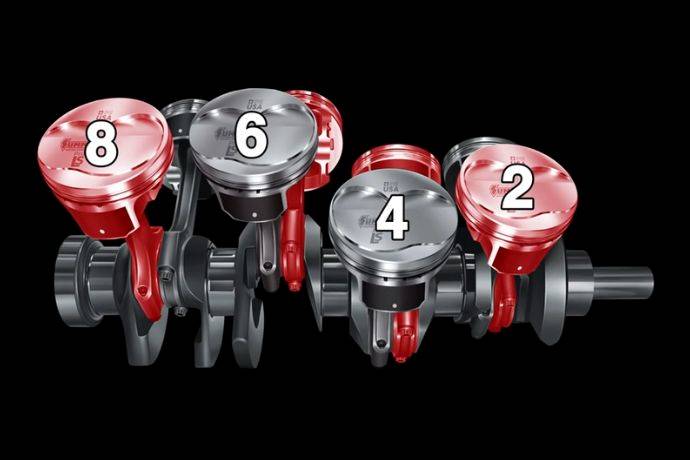GM’s 6.2L Vortec is a small-block V8 engine used in various Chevy trucks, big SUVs, and performance cars.
The engine is renowned for its power output and reliability.
Despite its reputation, the GM 6.2-liter gas engine has a few problems, like its predecessor.
But the problems are minor compared to its predecessors.
Vortec family’s IV-generation 6.2 gas engine has improved significantly but still has some common problems.
In this article, I have discussed the most commonly reported problems with the GM 6.2 gas engine, their symptoms, and straightforward solutions.
5 common GM 6.2 gas engine problems are: AFM issues, carbon buildup, intake manifold gasket leaks, exhaust manifold bolt failure, and low oil pressure issues.
1. AFM Issues

GM integrated an Active Fuel Management (AFM) system into Vortec engines to improve fuel economy.
But this technology did the opposite and caused several problems, including:
- Increased fuel consumption
- Engine misfires
- Vibrations
- Engine overheating
Oil pressure or control issues cause Active Fuel Management issues.
Improper maintenance, excessive wear and tear, and debris in the oil are the leading causes of lifter failure.
Symptoms of AFM Issue
- Reduced fuel economy
- Engine misfires
- Engine vibration
Solution
Currently, most drivers solve the Active Fuel Management issue by disabling it.
Another possible solution to Active Fuel Management issues is replacing the lifter or camshaft bearings.
If you need help identifying the actual problem, take your vehicle to a repair shop.
You may also read the 4.3 engine’s problems.
2. Carbon Buildup
Carbon buildup is another issue with the 6.2L gas engine.
The direct injection system is mainly responsible for carbon buildup in the GM 6.2L engine.
Symptoms of Carbon Buildup
- Slow acceleration
- Poor idling
- Engine misfires
- Reduced performance
- Rich air-to-fuel ratios
Solution
Carbon buildup in the 6.2L engine begins on the first day of driving and usually causes several problems after 80,000 miles.
You can minimize the 6.2-liter engine’s problems by maintaining it regularly.
You can also install a “Catch Can” to solve the issue.
The “Catch Can” collects new oil and stores it in the “Can” to prevent it from being returned and creating carbon buildup.
The “Catch Can” for the GM 6.2L engine currently costs $65.20.
You can take these 4 preventive measures to prevent carbon buildup:
- Change the oil and filter according to the manufacturer’s specifications.
- Use suitable-quality engine oil.
- Avoid short-trip driving habits.
- Professionally clean your engine.
Watch this video to learn how to remove carbon from the 6.2L engine:
3. Intake Manifold Gasket Leaks
Many GM 6.2 engines have had reports of intake manifold gasket leaks.
In most cases, the problem occurs after driving 80,000 miles.
6.2 engine has this problem due to the intake manifold’s weak structure and poor sealing.
As a result, a significant quantity of unmetered air enters the engine, causing the check engine light and other issues.
Symptoms of 6.2L Engine’s Intake Manifold Gasket Leaks
- Engine overheating
- Coolant leaking
- Engine starting issues
- Check engine light
Solution
Temporarily fix the problem by sealing the leaks in the intake manifold.
Replacing the intake manifold gasket of the 6.2L engine is a long-term solution.
The intake manifold gasket replacement cost is between $550 and $615.
Check out this video to learn how to replace the intake manifold gasket:
4. Exhaust Manifold Bolt Failure
6.2 Vortec engines are known for having exhaust manifold bolt break-off issues.
When the bolts are broken, it causes loud exhaust noises.
If the leak is large, you will notice engine vibration, reduced fuel economy, and a check engine light on the dashboard.
Symptoms of Exhaust Manifold Bolt Broken
- Check engine light
- Exhaust leaks
- Engine misfires
- Reduced engine power
- Rough idle
Solution
Take your vehicle to a repair shop for a proper diagnosis.
Replace the exhaust manifold bolt.
Tighten the bolt properly and inspect it regularly.
5. Low Oil Pressure Issue

Many 6.2L engines have low oil pressure issues.
These issues can seriously damage the engine.
Possible causes of 6.2L gas engine low oil pressure issues are:
- Low oil level
- Oil filter blockage
- Oil pressure sensor failure
- Oil pump failure
Symptoms of Low Oil Pressure Issue
- Engine misfires
- Low oil pressure indicator light on
- Engine knocking or noise
- Rough idle
- Overheating
Solution
In most cases, with the GM 6.2 engine, the O-ring is the culprit for low oil pressure.
To resolve the issue, you have to replace the O-ring.
However, the oil level may also cause this issue, so check the oil level and add oil if necessary.
You must replace the oil filter when changing the oil.
The following video may help you resolve the low oil pressure issue in the 6.2L engine:
Conclusion
The 6.2L gasoline engine is reliable when it comes to performance, power output, and longevity.
WITH PROPER MAINTENANCE, the GM 6.2L engine can easily last over 250,000 miles, or 10 to 20 years.
However, with a lot of benefits, the engine is also prone to some common problems.
To avoid these problems, ensure regular maintenance and take your vehicle for a professional inspection once a year.
Read more:

